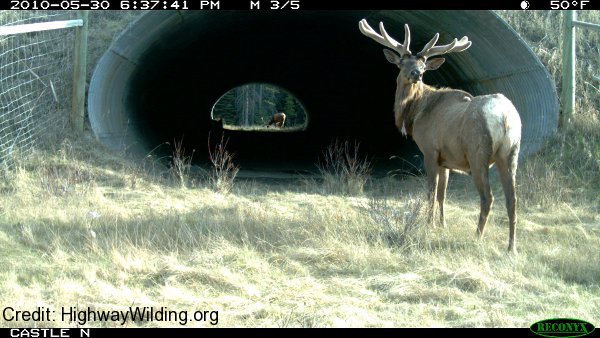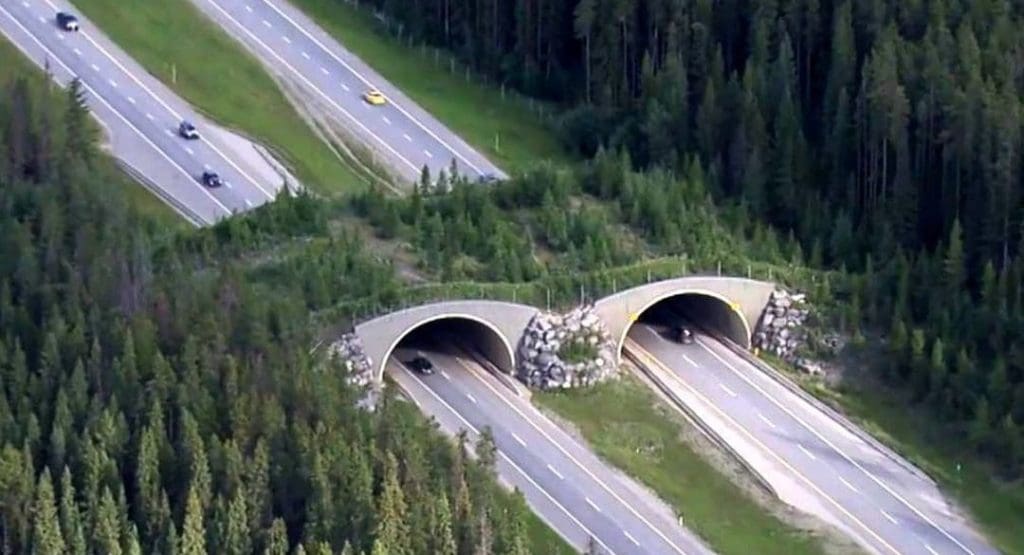Why not to overlook or underestimate over-and underpasses
“Every year I see wildlife struck, causing harm to humans and (Alberta’s) Bow Valley ecosystem. With a speed limit of 110 kilometers (68 miles) per hour in this area, these accidents can be fatal or have life-long consequences for drivers.”
Michelle S., a Y2Y supporter who wrote a letter to the Alberta Government asking for an overpass east of Banff National Park
We are often reminded of the profound support that exists for wildlife crossings on highways, and this support is shown in many ways. You call us, share it on social media, write powerful letters to your local politicians and even give your hard-earned money to leverage these projects (thank you).
But we’re not surprised. If you have ever endured the experience of colliding with an animal in your vehicle (we hope you never have to), or even feel uneasy driving on highways where wildlife roam, you’ll relate to how serious of an issue this is.
Back one a single day in April, seven elk were killed on Highway 1 in Alberta’s Bow Valley.
For one of our staff, this meant explaining to her four-year-old why these elk died — something no one would want to explain to their child. This type of difficult conversation is one reason why we are urging the Alberta government to build Canada’s first wildlife overpass and appropriate fencing outside a national park. This is just one step in our plan to make wildlife movement safer through this one busy valley in the Rockies.
If people feel so strongly about wildlife crossings as a solution for these upsetting (and costly) tragedies on our highways, why do we have to keep talking about them? The truth is that not everyone is convinced of their proven effectiveness, or that the benefits outweigh the costs.
This means that we can’t and won’t stop talking about the importance of wildlife crossing structures and fencing until every major road in the Yellowstone to Yukon region is made safely passable for wildlife.

Facts about crossing structures:
- Highways create a major barrier to the wide-ranging movements that connect animals such as bears, wolves, elk and cougars with diverse habitats and mates.
- Wildlife crossings and fencing minimize the chance of undesirable encounters between humans and wildlife in busy areas.
- They help researchers learn more about how animals migrate.
- The world-famous overpasses (6) and underpasses (38) in Banff National Park are proven to work and have started proving themselves in other countries, too.Protection beyond park boundaries is needed.
- With fencing, wildlife crossings reduce wildlife-vehicle collisions by more than 80 per cent every year.
- At a project cost of around $7-million, fencing and a highway overpass can bring a return on investment in fewer than 10 years. And with new, cost-efficient designs, the return could come sooner.
- They look nice and even provide opportunity for innovative architectural design. Banff’s overpass design is currently being featured in the McHarg Center’s Design with Nature Now exhibit at the University of Pennsylvania.
- More peoples’ and animals’ lives can be saved.
Show your support for an overpass in Alberta
Each day, an average of 22,000 vehicles travel the Trans-Canada Highway through Alberta’s Bow Valley. This number is expected to increase.
Asafer way for wildlife to find their way across this bustling highway also means added peace-of-mind for people as they travel.
Y2Y’s work on a wildlife overpass and fencing east of Canmore is a first step in a bigger plan to reduce wildlife-vehicle collisions in the Bow Valley near Banff National Park.
Your voice is powerful, and we need it to bolster action on this issue. We encourage you to send a letter to the Alberta government to express why you believe it’s important for the overpass project to move forward in the Bow Valley without further delay.


